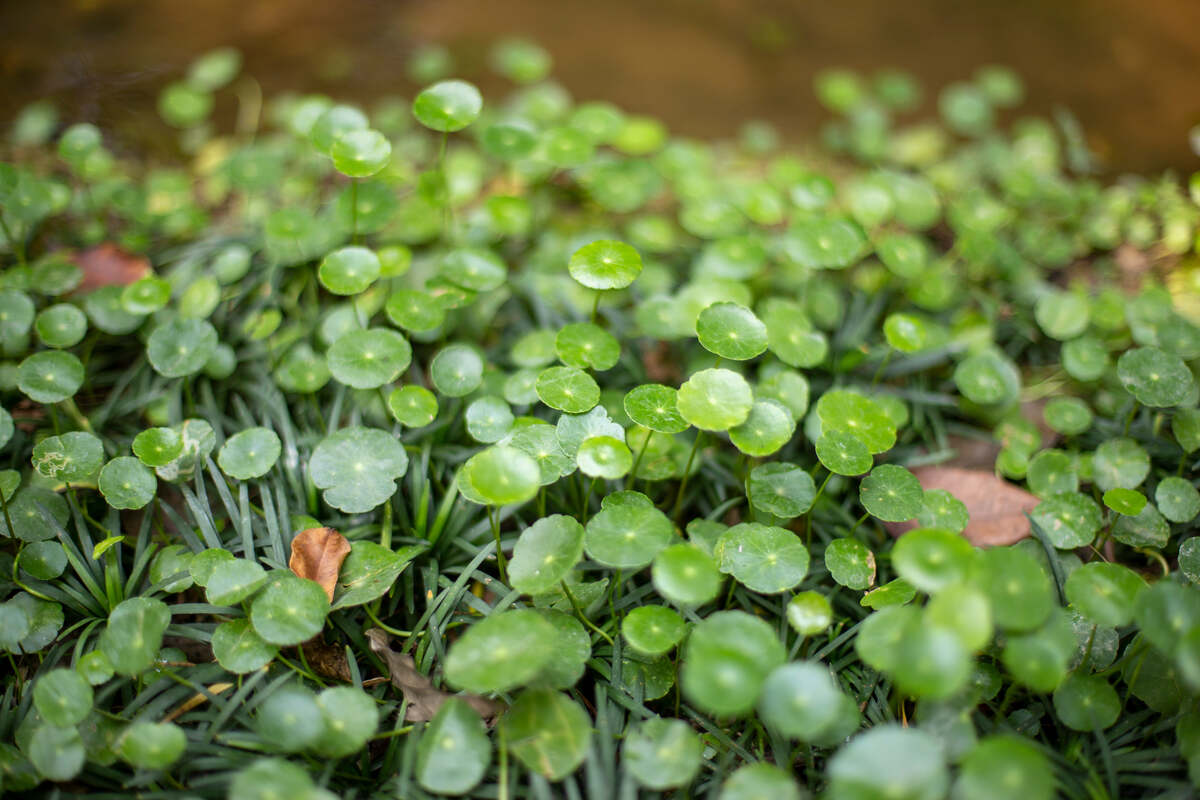
Jacksonville’s warm, humid weather invites weeds to overrun your lawn. From sedges growing in wet clay-sand soil to crabgrass spreading in patchy grass, these tough weeds will hang around stubbornly unless you kill them completely, down to the roots.
This guide covers 8 common weeds that cause problems for Jacksonville homeowners: sedges, crabgrass, torpedograss, dollarweed, doveweed, chickweed, spurges, and old world diamond-flower. You’ll learn how to identify each weed, what causes them to grow, and the most effective way to eliminate them using methods that work in North Florida’s climate.
Sedges

Sedges are grass-like perennials with triangular stems that thrive in moist soil. If you roll a stem between your fingers, if it feels triangular instead of round, you’ve got sedge. They typically have a distinctive yellow-green color that stands out from your regular grass.
Where you’ll find it: Sedges thrive in wet, poorly drained soils like the clay-sandy type around Jacksonville. Sedges love septic system drain fields, low-lying areas that stay wet longer after storms, and anywhere you’re dealing with poor drainage.
How to kill it: For small patches, hand-pulling is the best solution. Work when the soil is moist and dig deep enough (4 to 6 inches) to get those underground tubers.
If you have a lot of sedge in your yard, use products with halosulfuron, imazaquin, or bentazon. Apply it during active growth periods and plan on treating again in 2-3 weeks for any stragglers that emerge.
- Halosulfuron (Sedgehammer) works well as a spot treatment for all sedge types
- Imazaquin will take care of most sedges, but don’t use it on bahiagrass lawns.
- Bentazon is effective against yellow nutsedge and green kyllinga.
Call professionals if you’re dealing with purple nutsedge covering more than 10 square feet, especially in areas built on former wetlands, you’ll need multiple treatments and expertise to knock it out.
Crabgrass
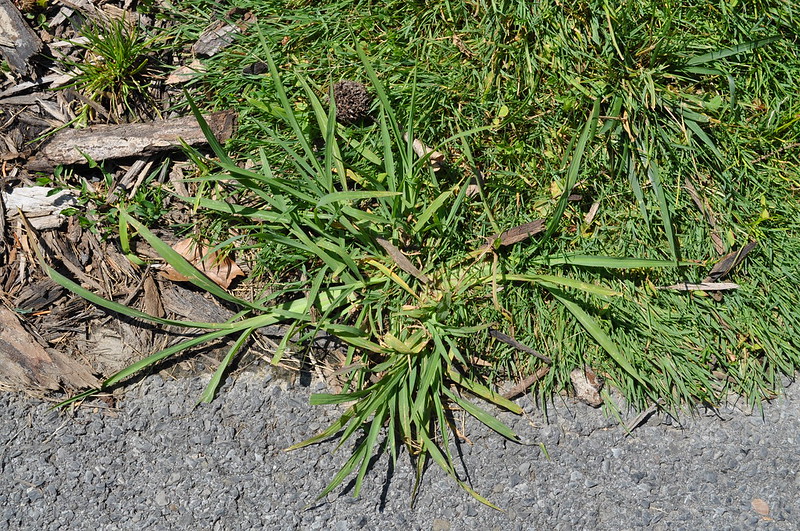
Crabgrass is a light green, coarse-textured grass that pops up in star patterns close to the ground. It’s noticeably wider than your lawn grass and spreads aggressively during the hot summer months.
Where you’ll find it: Crabgrass targets thin or stressed turf areas. Look for spots with compacted soil from construction, a lot of foot traffic, or anywhere your turfgrass is struggling to grow.
How to kill it: You can hand-pull small patches of crabgrass, For larger infestations, apply pre-emergent herbicides before soil temperatures hit 55 degrees Fahrenheit, which is usually when overnight temps stay above 50 degrees around mid-to late March. Look for pre-emergents with one of the following active ingredients to handle crabgrass:
Prevention: Choose the best grass type in Jacksonville for your home and mow regularly at the right height, removing only remove the top third of your grass each time. Dense, healthy turf crowds out crabgrass.
Call a pro if more than 30 percent of your lawn is crabgrass, especially in newer neighborhoods where construction has caused compacted soil.
Torpedograss
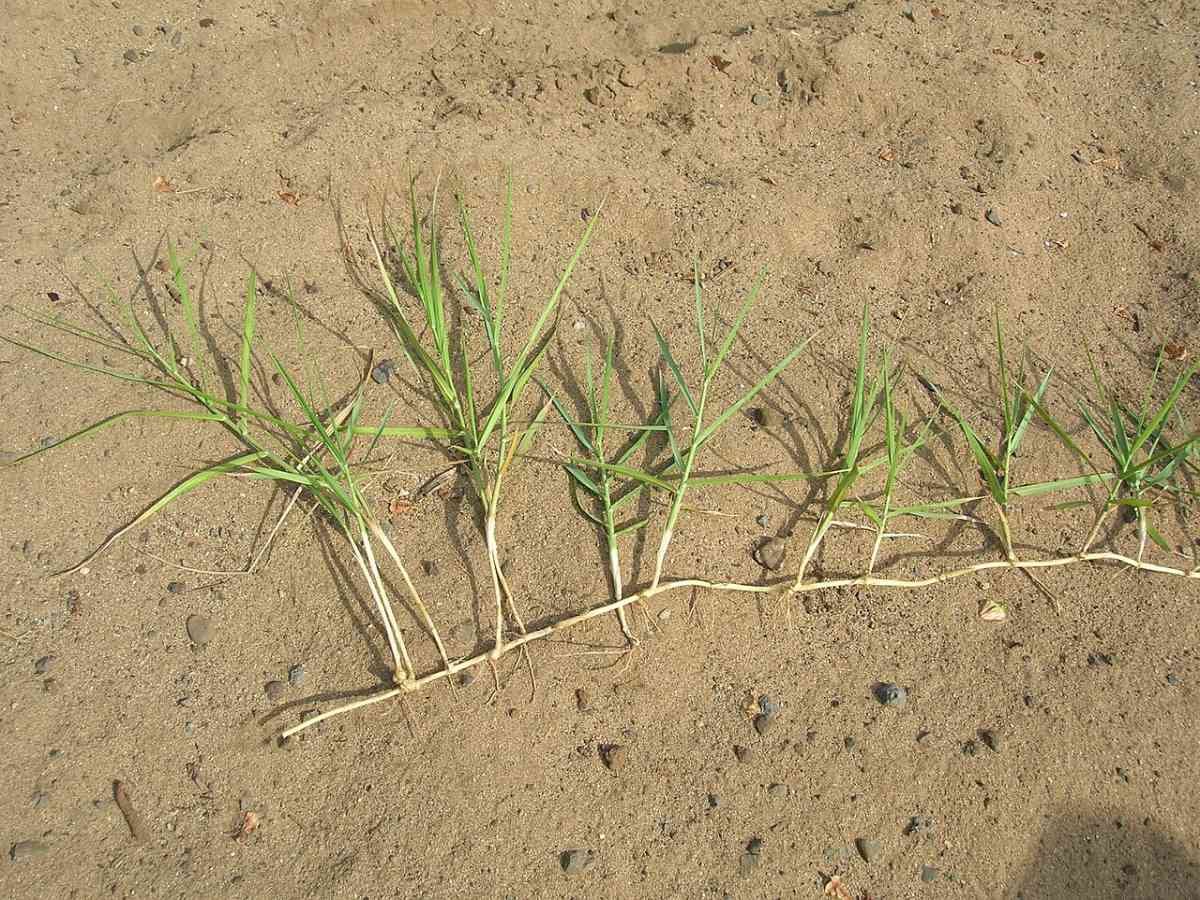
A perennial grass weed, torpedograss grows up to 3 feet tall with narrow leaves. It thrives in Jacksonville’s warm, humid climate and is extremely resilient. It’s particularly problematic because it grows quickly, has deep roots, and can outcompete your turf. Worse, the more you mow it, the stronger it comes back.
Where you’ll find it: Torpedograss loves areas with disturbed soil. You’ll often spot it along your property lines, around pools or other water features, and in areas where your grass is already stressed or thin. It can be most problematic for St. Augustine lawns.
How to kill it: Digging up torpedograss can work, especially in confined spaces like flowerbeds, but be sure to remove every part of the plant to keep it from regrowing. Throw it in the trash, never compost.
In larger areas, apply herbicides when the torpedograss is actively growing, typically during spring or summer. Treatment options include herbicides with the following active ingredients:
- Quinclorac: Safe option for zoysiagrass lawns
- Fluazifop (Fusilade II): Bermudgrass lawns respond best to this one, but it should be avoided with St. Augustinegrass.
- Glyphosate: Most effective option, but will kill all vegetation it touches. Use for spot treatment where you can reseed or sod once cleared.
Dollarweed
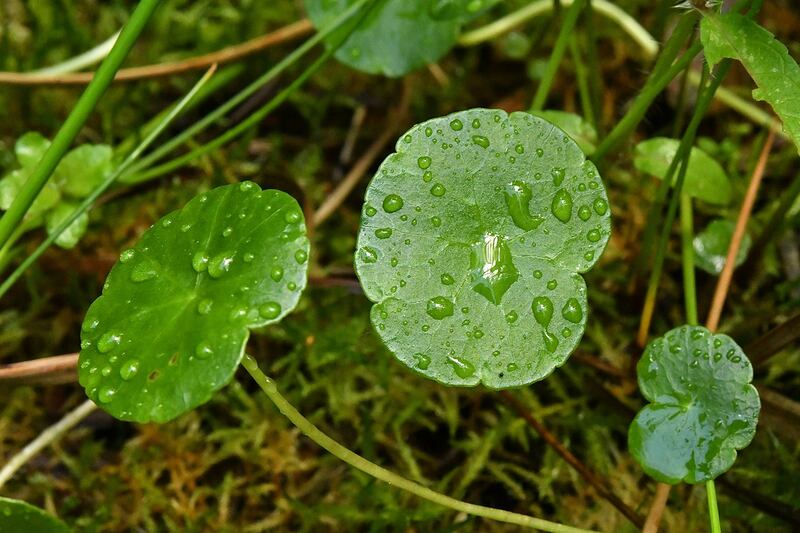
Dollarweed (also called pennywort) is a perennial broadleaf weed that grows low to the ground. Its leaves are bright green, waxy, and look like tiny lily pads about the size of a silver dollar, hence its name.
Where you’ll find it: Dollarweed thrives in moist or poorly draining soil like the clay-sand mix found in Jacksonville. It can also be a result of` overwatering. Check around low-lying areas in your yard, irrigation systems, around downspouts, and anywhere water tends to collect.
How to kill it: You can hand-pull dollarweed because it tends to come out pretty easily, roots and all.
For chemical control, choose products based on your grass type:
If you have St. Augustine or centipedegrass:
- Pre-emergent: Atrazine applied in the fall before it gets going
- Post-emergent: 2,4-D combinations, metsulfuron, or atrazine for existing plants
If you have Zoysiagrass, Bermudagrass, or bahiagrass:
- Pre-emergent: Isoxaben applied in the fall to prevent spring growth
- Post-emergent: 2,4-D combinations or metsulfuron for plants already growing
Apply post-emergent during active growth periods in the spring and summer.
Call professionals if dollarweed keeps coming back.
Doveweed
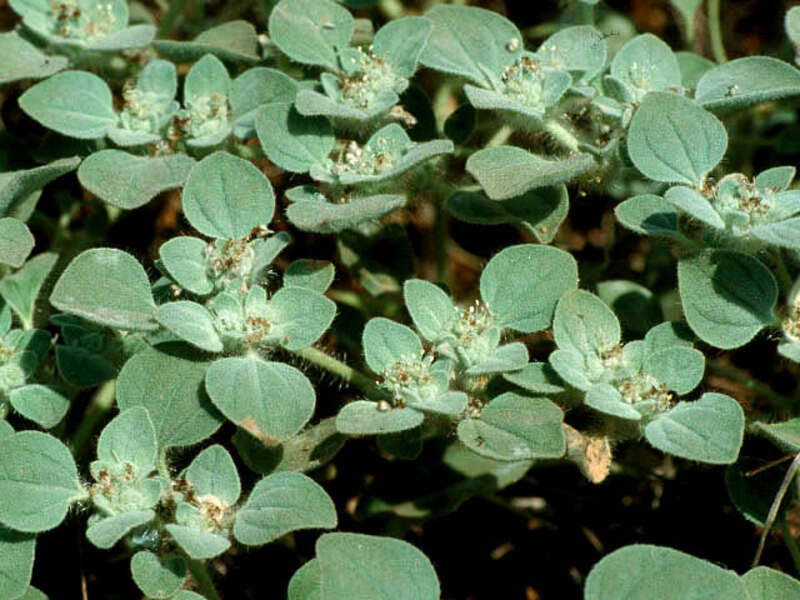
Doveweed is an aggressive summer annual grass with small purple flowers that thrives in Jacksonville’s hot, humid conditions. It spreads rapidly, particularly in shady areas like under trees or near structures where the grass stays damp longer.
How to kill it: Apply pre-emergent herbicides like indaziflam in early spring before soil temperatures reach 65°F. You can also hand-pull plants before they flower and seed, which typically happens in early summer. Remove the entire plant, including the roots.
Call a professional when you have large infestations.
Chickweed

Chickweed is a winter annual that forms low-growing mats with tiny white star-shaped flowers. It’s most active during Jacksonville’s brief cool period from December through February, when most other plants are dormant.
Where you’ll find it: You’ll see chickweed in areas where your grass goes dormant or thins out during winter. It likes spots with heavy shade, areas with poor soil quality, and anywhere turf struggled in the previous growing season.
How to kill it: Use products with prodiamine or pendimethalin in early October before nighttime temperatures drop below 70°F. Also, maintain good winter lawn health through proper winter care practices.
You can also hand-pull small patches during those few weeks when we actually have winter weather and the plants are easier to remove.
For more detailed information about this winter weed, check out our complete guide on How to Identify and Control Chickweed in Your Florida Lawn
Spurges
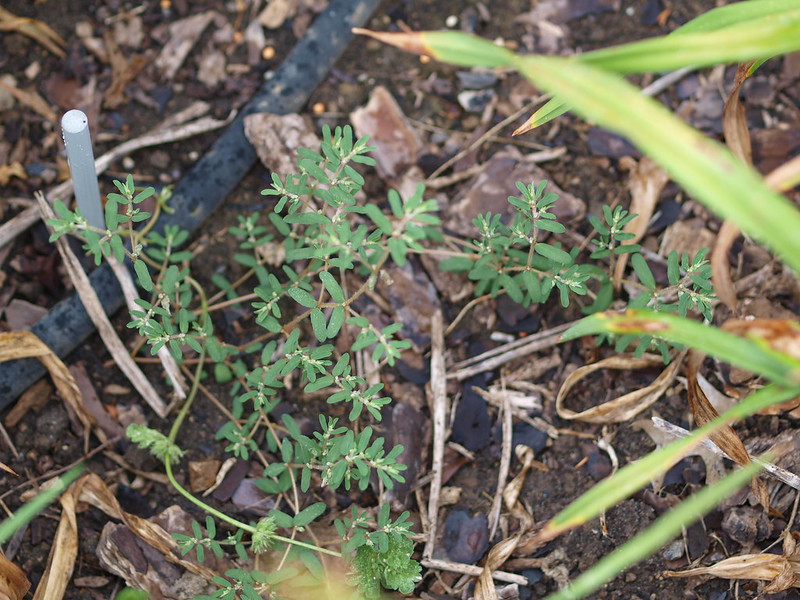
Two common varieties of spurge invade Jacksonville lawns: prostrate spurge and garden spurge. Prostrate spurge has asymmetrical, round leaves that sometimes have a reddish spot on them. Garden spurge has hairy reddish-purple stems and serrated leaf blades. Both grow low to the ground and produce that telltale milky white sap when you break their stems.
Where you’ll find it: Spurges love thin turf areas, spots around driveways and sidewalks where reflected heat stresses grass, areas with compacted soil, and anywhere your lawn struggles during peak summer stress periods.
How to kill it: First, always wear gloves when handling spurge. That milky sap can irritate your skin, especially during hot, humid conditions.
When hand-pulling, ensure you remove the entire taproot system during cooler morning hours so it doesn’t grow back. Or, apply a pre-emergent during the dry spring season, typically from March through early May.
- Atrazine: For St. Augustinegrass and centipedegrass lawns only, provides season-long control
- Isoxaben: Safe for most other grass types, creates a barrier preventing new spurge seeds from germinating
- Simazine: Alternative pre-emergent option for various grass types
For post-emergent control, target existing plants with:
- Atrazine: Use only on St. Augustine or centipedegrass for existing spurges
- Simazine: Can be used for both pre- and post-emergent control
- Metsulfuron: Can be used for both pre- and post-emergent control
- Sulfentrazone: Fast-acting option that works well during active growth periods
Call a professional when large spurge infestations cover more than 25% of your lawn.
Old World Diamond-Flower

Old World Diamond-Flower forms spreading mats with narrow leaves and small white flowers. You’ll particularly notice it in areas with morning shade from mature trees, which is common in older Jacksonville neighborhoods like Riverside.
Where you’ll find it: Look under established trees where grass struggles to get enough sunlight and spots where leaf litter can trap the moisture diamond-flower loves.
How to kill it: If you’re hand-pulling this weed, remove the entire root system to prevent regrowth. The soil should be slightly moist (but not soaked) to make pulling it up easier.
For larger outbreaks, use:
- Atrazine: Apply during active growth periods on St. Augustine and centipedegrass. It is good for both prevention and control
- Carfentrazone: Fast-acting contact herbicide that works well on actively growing diamond-flower for other grass types
- 2,4-D combinations: Systemic control that kills the entire plant, including the root system
- Triclopyr: Particularly effective in shade conditions where this weed thrives
Call professionals if you have a widespread infestation of diamond-flower that sticks around even after multiple treatments, it’s best to get help from a pro.
FAQ: Jacksonville Weeds
Apply pre-emergent herbicides for summer annuals like crabgrass in late March or early April. Treat winter annuals like chickweed with fall pre-emergents in early October. For existing weeds, spring and summer, during active growth periods, use post-emergent treatments.
No. Using the wrong herbicide can damage your lawn. For example, atrazine is safe for St. Augustine and centipedegrass but can harm other grass types. Fluazifop works well on Bermudagrass but will damage St. Augustine. Always check what type of grass you have, read product labels carefully before using any herbicide, or ask a lawn care expert for help.
Reclaim Your Jacksonville Lawn

To successfully eliminate weeds from your Jacksonville lawn, you need the right mix of identification, timing, and treatment. Start by targeting the most troublesome weeds, fix any moisture or soil problems, and maintain thick, healthy turf that naturally fights off weed invasion. Regular maintenance and prompt attention to new weeds will keep your lawn beautiful all year round.
Let the pros save you time with expert weed control. Lawn care professionals use better products, know local conditions, and maintain regular schedules. Connect with a local Jacksonville lawn service expert through LawnStarter for a custom plan tailored to your yard’s specific needs.
For more lawn care tips for Jacksonville, check out the following:
Main Image: Dollarweed. Photo Credit: Santi / Adobe Stock